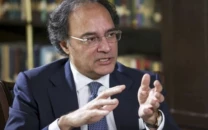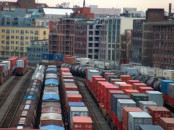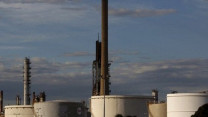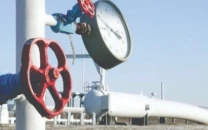Socially inclusive recovery
Without meaningful reforms, economic boom-and-bust cycle will persist
1736124892-0/image-(1)1736124892-0-640x480.webp)
Economists, analysts, and commentators frequently rely on data, forecasts, and discussions of micro and macroeconomic indicators on daily talk shows to explain the economic trends and performance. However, these numbers often fail to tell the complete story, particularly in developing economies like ours, where much of the economy operates informally.
This disconnect becomes more evident when gross domestic product (GDP), the most frequently used economic metric, is scrutinised for its limitations in portraying the true state of economic well-being.
To illustrate, let us examine the list of top 10 countries by GDP. India ranks as the fifth-largest economy globally by nominal GDP, a remarkable achievement that underscores its economic might.
Yet, when we compare India with the other nine countries on the list using social and human development metrics, such as the Human Development Index (HDI), literacy rates, healthcare accessibility, and income equality, India stands out as an outlier. This discrepancy highlights the shortcomings of mere looking at numbers as a sole measure of economic success.
Back at home, the financial managers at Q-block are no different and while they are mostly busy firefighting to stay afloat from one IMF deal to another, they take some pause from time to time to talk about falling inflation, averting balance of payments crisis and even rising stock market as a sign of economic turnaround.
However, on the ground, people are still wondering what has changed in their daily lives when they are still struggling for basic necessities. Pakistan, once ahead of India on the UN HDI during the 90s, is now ranked 164th as per the latest 2023-24 report trailing even Nepal (146), Bangladesh (129) and Bhutan (125). Let's talk about that "falling inflation." Yes, perhaps it is not climbing as steeply as before, but when prices of essential goods are still out of the reach for many, what's the point? Is it really an improvement if people have to choose between paying for the next meal or the electricity bills?
And current account surplus was achieved indeed but at the cost of a choking economic engine, lack of job creation, and negative industrial growth. It's a bit like fixing cracks in a wall while the roof caves in – technically progress, but completely missing the point.
Then there is the stock market – the all-time favourite of cheerleaders in any government. A "rising" stock market is paraded as an evidence of economic recovery, but who does it actually benefit? Certainly not the millions of Pakistanis working in the informal sector nor the farmers struggling with skyrocketing input costs.
The stock market growth is a tale of exclusivity, benefiting a tiny fraction of the population while the vast majority remains excluded from any tangible benefits.
The real problem here is that these macro and microeconomic "improvements" are not socially inclusive or sustainable. Growth, as celebrated by the financial managers, seems to be happening in an alternate universe where only the privileged reside.
Without meaningful structural reforms, Pakistan's economic boom-and-bust cycle will persist, as it has for decades. Each time the economy overheats or faces external shocks, the playbook remains the same: raise interest rates to combat inflation, tighten monetary policy, and secure yet another IMF bailout.
Once the economy cools down, the pendulum swings the other way – interest rates are lowered to stimulate growth, and policymakers pat themselves on the back for engineering a recovery. But this cycle is a house of cards, built on temporary fixes rather than sustainable foundations.
The long-awaited structural reforms, such as broadening the tax base, reducing government expenditure, and investing in human capital – remain elusive, perpetually kicked down the road like an inconvenient can. Without these changes, any economic recovery is doomed to be short-lived.
Lowering interest rates might provide a momentary boost to borrowing and investment, but it does nothing to address the underlying inefficiencies plaguing the economy. The informal sector, which constitutes a significant portion of economic activity, remains unintegrated into the formal economy, depriving the state of much-needed revenue.
Meanwhile, subsidies and fiscal mismanagement continue to bleed resources that could be channelled into critical infrastructure and social services. With the central bank adopting a dovish stance on monetary policy and markets anticipating a potential 200-basis-point rate cut this year, it is imperative that this monetary easing cycle is not another fleeting fix. This time, it must be reinforced by robust structural reforms and unwavering fiscal discipline to ensure that the economic framework is resilient enough to channel capital effectively without cracking under pressure.
Without these foundational changes, the flow of capital risks overwhelming an already fragile system, leaving us trapped in yet another cycle of short-term gains and long-term instability.
The writer is a financial market enthusiast and is attached to stocks, commodities and emerging technology



















COMMENTS
Comments are moderated and generally will be posted if they are on-topic and not abusive.
For more information, please see our Comments FAQ